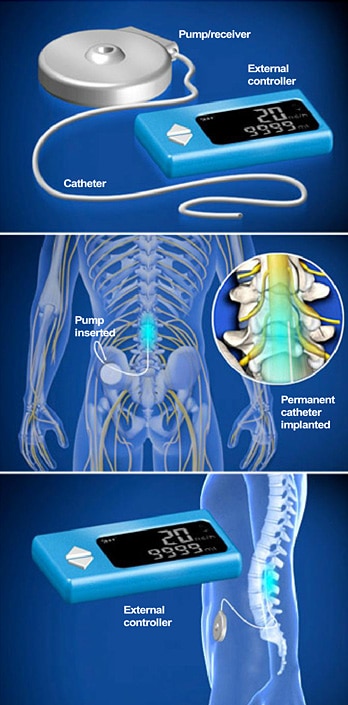 If you live with excruciating pain that hasn’t responded to traditional, more conservative treatments or surgery, an intrathecal pump implant may be your best option. While the pump is more efficient than pills for stopping your pain, it’s an invasive procedure.
If you live with excruciating pain that hasn’t responded to traditional, more conservative treatments or surgery, an intrathecal pump implant may be your best option. While the pump is more efficient than pills for stopping your pain, it’s an invasive procedure.
At the Southeastern Spine Institute (SSI), the spinal medicine doctors always adopt a conservative approach, so recommending the intrathecal pump isn’t any doctor’s first choice. At SSI, your doctor tries the less invasive options first. If you respond to them, there’s no need to explore alternatives.
It’s Not for Everyone
The most likely candidates for the intrathecal pump have cancer or suffer from inoperable chronic pain. Other candidates are those with symptoms of spasticity (such as people with cerebral palsy or multiple sclerosis). You need pain relief because there’s not much that can be done to correct the source of your pain. So the treatment involves pain management.
The pump delivers pain medication over time directly where it’s needed. The hockey-puck-sized device is implanted under your skin in an unobtrusive place, such as in your abdomen or above your buttocks. You may forget it’s even there, except that you’ll experience the continual pain relief that it provides.
A catheter extends from the pain pump, as it’s called, to the area where your pain originates, often right next to the spinal cord. The intrathecal pump implant sends relief in the form of small amounts of medication through the catheter at regular intervals.
How the Intrathecal Pump Implant Works
The pump itself contains a reservoir of medication that stops the pain signals from getting to your brain. The catheter is put in place surgically only after you have passed a trial system confirming that the catheter is in the proper place and the medication is effective. The pump can be removed, but the catheter is permanent.
Since the pump sends medication directly to your spine, it only needs a very small amount. The medication reservoir, therefore, lasts for 30 to 90 days, depending on the medication and your dose. Your doctor or a pain management specialist can refill the pump by inserting a needle through your skin into the reservoir in a process that takes about 30 minutes.
Trial First, Surgery Second
You have to participate in a trial run before you go through the surgery to have the intrathecal pump implant inserted beneath your skin. For the trial, your spine surgeon puts a temporary catheter in place that’s connected to a temporary pump that you carry around for seven days. If you’re comfortable with the device and the medication eases your pain, you’re ready for the more permanent solution.
Inserting the permanent catheter requires surgery for which you’re given general anesthesia. Your surgeon removes the temporary catheter and places the permanent one, usually through an incision. An extension of the catheter is then tunneled under your skin to the spot where the pump will go. Finally, the surgeon creates a pocket for the pump, usually in your abdomen. Once positioned and sewn into place, the catheter is connected.
Implanting the pump is an outpatient surgery, during which you’ll be unconscious (so you’ll need to arrange for a ride home). After the procedure, you need to rest for several days, as the incision sites need time to heal properly. But the pump starts working immediately, so you should feel relief from your chronic back pain. The battery for the intrathecal pump implant lasts three to five years.
